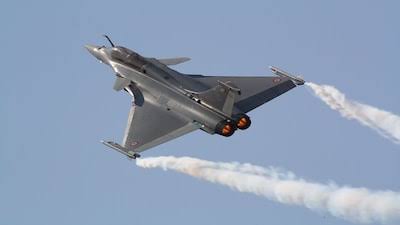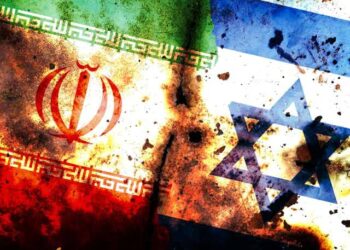In a significant escalation of tensions between nuclear-armed neighbors, a Fatah-II missile launched by Pakistan towards Delhi was intercepted near Sirsa, Haryana, on May 10, 2024.

The Indian military successfully thwarted the missile, which was seen as a direct threat to national security. In response, India conducted airstrikes on four Pakistani air bases, marking a significant retaliation.
This confrontation highlights the ongoing tensions and advanced military capabilities between the two nations. The incident underscores the volatile nature of their relationship and the potential for further escalation.
Key Takeaways
- The Fatah-II missile was intercepted near Sirsa, Haryana, on May 10, 2024.
- India retaliated with airstrikes on four Pakistani air bases.
- The incident marks a significant escalation in the India-Pakistan conflict.
- The confrontation showcases the advanced military technologies of both nations.
- Tensions between the two nuclear-armed neighbors remain high.
Breaking: Pakistan Launches Fatah-II Missile Toward Delhi
The Indian military sprang into action upon detecting a Fatah-II missile fired from Pakistan, allegedly aimed at Delhi. This incident marked a significant escalation in the ongoing tensions between India and Pakistan.
Initial Reports of Missile Launch
The detection of the missile launch was facilitated by Indian military surveillance systems, which quickly identified the trajectory of the Fatah-II missile.
Time and Location of Launch Detection
The exact time of the launch was reported to be early Saturday morning, with the location pinpointed to a region within Pakistan.
Indian Military’s First Alert Systems
Upon detection, the Indian military’s alert systems were triggered, prompting immediate action to counter the potential threat.
Target Confirmation: Delhi in Crosshairs
Further analysis confirmed that the target of the Fatah-II missile was indeed Delhi, leading to a heightened state of alert.
Missile Trajectory Analysis
The trajectory analysis indicated that the missile was on a path to potentially impact the Delhi region, prompting swift defensive measures.
Potential Impact Zone Assessment
Assessments suggested that the potential impact zone included densely populated areas around Delhi, necessitating a rapid response.
The swift response by the Indian air defense system underscored the seriousness with which the threat was treated, highlighting the complexities of the India Pakistan missile attack scenario.
This incident is a significant development in the Breaking news India Pakistan war narrative, with the international community closely monitoring the situation.
India Pakistan Missile Attack: Fatah-II Missile Intercepted Near Delhi
The Indian military successfully intercepted a Fatah-II missile launched by Pakistan near Sirsa, Haryana. This significant event highlights the readiness and capabilities of India’s defense systems in responding to threats from neighboring countries.

Interception Details Near Sirsa, Haryana
The interception occurred when the Indian air defense system detected the incoming Fatah-II missile and swiftly activated its anti-missile defense systems. Advanced radar systems and real-time data analytics played a crucial role in tracking the missile’s trajectory.
Anti-Missile Defense Systems Deployed
India’s anti-missile defense systems, comprising highly sophisticated radar and interceptor missiles, were deployed to neutralize the threat. These systems are designed to detect, track, and destroy incoming missiles.
Interception Confirmation Process
The interception was confirmed through a combination of ground-based radar systems and satellite surveillance. This multi-layered approach ensures the accuracy and effectiveness of the interception.
Indian Air Defense System’s Response Time
The Indian Air Defense System demonstrated a rapid response time in detecting and intercepting the Fatah-II missile. The swift activation of the command chain and precise technical execution were critical in neutralizing the threat.


Command Chain Activation
The command chain was activated promptly, allowing for real-time decision-making and coordination between different defense units. This ensured a unified and effective response to the missile threat.
Technical Aspects of the Interception
The technical aspects of the interception involved advanced algorithms and high-speed computing to predict the missile’s trajectory and determine the optimal interception point. The success of this operation underscores India’s technological advancements in missile defense.
Following the interception, India’s military retaliated with airstrikes on four Pakistani air bases, as reported. The escalating tensions between India and Pakistan have drawn international attention, with global powers calling for restraint and diplomatic resolution.
Understanding Pakistan’s Fatah-II Missile System
The Fatah-II missile system is a crucial element in Pakistan’s defense strategy, offering long-range capabilities that pose a significant threat to Indian territories.
Technical Specifications and Capabilities
The Fatah-II missile boasts advanced technical specifications, including a range of over 400 kilometers, making it a potent weapon in regional conflicts. Its payload capacity and accuracy are designed to deliver precision strikes.
Range, Payload, and Accuracy
The Fatah-II missile has a reported range of approximately 400 kilometers, allowing it to target significant Indian cities. Its payload capacity is optimized for delivering high-explosive warheads, and its accuracy is enhanced by advanced guidance systems.
Comparison with Other Pakistani Missiles
Compared to other Pakistani missiles, the Fatah-II stands out due to its extended range and precision. It complements Pakistan’s existing missile arsenal, providing a versatile deterrent capability.
Development History and Strategic Importance
The development of the Fatah-II missile is a significant milestone in Pakistan’s military modernization efforts. Understanding its origins and role in Pakistan’s defense strategy is crucial.
Origin of the Fatah-II Program
The Fatah-II program was initiated to address the need for a long-range, precision-guided missile capable of countering regional threats. It represents a significant advancement in Pakistan’s indigenous missile technology.
Role in Pakistan’s Defense Strategy
The Fatah-II missile plays a critical role in Pakistan’s defense strategy by providing a credible deterrent against potential aggressors. Its presence enhances Pakistan’s military posture, allowing for more flexible response options.



Pakistan’s Coordinated Drone Attacks Across India
The conflict between India and Pakistan took a dangerous turn as Pakistan conducted coordinated drone strikes on 26 Indian locations. This significant escalation marked a new phase in the ongoing tensions between the two nations.
26 Locations Targeted from Kashmir to Gujarat
The drone attacks were widespread, targeting various strategic locations across India, from the northern region of Kashmir to the western state of Gujarat. This broad targeting indicated a well-planned and coordinated effort by Pakistan’s military.
Types of Drones Used in Attacks
Reports indicate that the drones used in these attacks were primarily quadcopters and hexacopters, known for their agility and payload capacity. These drones were likely chosen for their ability to evade detection and deliver precise strikes.
Strategic Pattern of Target Selection
The selection of targets suggested a strategic pattern, focusing on military installations, key infrastructure, and sensitive government facilities. This pattern indicates that the attacks were designed to disrupt India’s military capabilities and create widespread disruption.
Damage Assessment and Indian Response to Drone Threats
The Indian military responded swiftly to the drone attacks, managing to shoot down several drones over cities like Amritsar. The Indian Air Force and other defense units were put on high alert to counter the drone threat effectively.
Infrastructure and Military Facilities Affected
The drone attacks resulted in damage to several military facilities and infrastructure, including radar stations and communication centers. The exact extent of the damage is still being assessed.
Counter-Drone Measures Implemented
In response to the drone attacks, Indian authorities implemented counter-drone technologies to detect and neutralize future drone threats. These measures include the deployment of anti-drone systems and enhanced surveillance.
| Location | Type of Facility | Status |
|---|---|---|
| Kashmir | Military Base | Damaged |
| Gujarat | Radar Station | Operational |
| Amritsar | Air Force Base | Under Surveillance |
India’s Retaliatory Airstrikes on Four Pakistani Air Bases
India’s military responded to the missile and drone attacks with precision airstrikes on key Pakistani air bases. This significant escalation underscores India’s commitment to defending its sovereignty and territorial integrity.
Strategic Targets Selected by Indian Military
The Indian military carefully selected four Pakistani air bases as targets for the retaliatory airstrikes. These bases were chosen for their strategic significance and role in supporting Pakistan’s military operations.
Air Base Locations and Significance
The targeted air bases are located in key regions of Pakistan, each playing a crucial role in the country’s military infrastructure. These bases are critical for Pakistan’s air defense and offensive capabilities.
Aircraft and Weapons Systems Deployed
India deployed its advanced fighter jets and precision-guided munitions for the airstrikes. The specific aircraft and weapons systems used were selected based on their capability to effectively target and neutralize the Pakistani air bases.
Outcome and Effectiveness of the Strikes
The outcome of the airstrikes was a significant disruption to Pakistan’s military capabilities. The effectiveness of the strikes was evident in the damage inflicted on the targeted air bases.
Damage Assessment Reports
Initial damage assessment reports indicate substantial damage to the targeted air bases, including destruction of aircraft and infrastructure. The full extent of the damage is being assessed.
Pakistani Military’s Defensive Response
The Pakistani military responded defensively to the airstrikes, with reports indicating attempts to mobilize air defense systems. However, the effectiveness of their response was limited.
As the situation continues to unfold, the international community watches closely, concerned about the potential for further escalation. The conflict between India and Pakistan remains a critical issue, with significant implications for regional and global stability.
Civilian Impact and Security Measures
In the wake of Pakistan’s Fatah-II missile launch towards Delhi, India has taken robust measures to ensure civilian security. The conflict between India and Pakistan has resulted in significant civilian impact, with reports indicating at least one person was killed and two others injured by Pakistani shelling in Indian-controlled Kashmir.
Emergency Protocols Activated in Delhi and Border Regions
The Indian government has swiftly activated emergency protocols in Delhi and other border regions to safeguard civilians. This includes evacuation procedures and public communication strategies to keep the populace informed.
Evacuation Procedures Implemented
Authorities have implemented evacuation procedures in vulnerable areas, relocating civilians to safer zones. These efforts are aimed at minimizing exposure to potential military targets.
Public Communication Strategies
Effective public communication strategies have been put in place, utilizing media and emergency alert systems to inform citizens about the situation and necessary precautions.
Civilian Infrastructure Protection Measures
In addition to emergency protocols, measures have been taken to protect civilian infrastructure. This includes lockdowns of critical facilities and securing transportation and communication networks.
Critical Facilities Lockdown Status
Critical facilities such as hospitals, schools, and government buildings have been placed under lockdown to ensure their safety and continuity of operations.
Transportation and Communication Networks Security
Transportation networks, including airports and railways, have been secured, and communication networks have been reinforced to prevent disruptions.
| Region | Security Measure | Status |
|---|---|---|
| Delhi | Emergency Protocols | Activated |
| Border Regions | Evacuation Procedures | Ongoing |
| Critical Facilities | Lockdown | Implemented |
Timeline: How the Conflict Escalated in May 2024
The conflict between India and Pakistan escalated significantly in May 2024, leading to a series of intense military exchanges. Understanding the timeline of events is crucial to grasping the complexity of the situation.
Preceding Events Leading to Missile Launch
The tensions between India and Pakistan had been escalating since the April 22 attack in Indian-administered Kashmir, which resulted in the deaths of 26 people, mostly tourists.
Diplomatic Tensions and Border Incidents
Diplomatic efforts to resolve the issue failed, leading to increased border incidents and heightened tensions between the two nations.
Intelligence Reports on Military Movements
Intelligence reports indicated significant military movements on both sides of the border, further escalating the situation.
Hour-by-Hour Breakdown of Military Exchanges
The military exchanges began with a sudden and intense escalation.
First Strike and Immediate Response
Pakistan launched the Fatah-II missile toward Delhi, which was intercepted by Indian defense systems. India responded with airstrikes on four Pakistani air bases.
Subsequent Military Actions by Both Sides
The conflict continued to escalate with both sides engaging in subsequent military actions, including drone attacks and counter-attacks.
| Date | Event | Details |
|---|---|---|
| April 22, 2024 | Attack in Kashmir | 26 people killed, mostly tourists |
| May 2024 | Escalation of Tensions | Diplomatic tensions and border incidents increased |
| May 2024 | Fatah-II Missile Launch | Pakistan launched missile toward Delhi |
| May 2024 | Indian Airstrikes | India retaliated with airstrikes on four Pakistani air bases |
Nuclear Dimension: Concerns and Safeguards
The recent conflict between India and Pakistan has brought the nuclear dimension to the forefront, sparking international concern. The nuclear capabilities of both nations raise significant concerns, given the potential consequences of an escalation.
Nuclear Capabilities of India and Pakistan
Both India and Pakistan possess nuclear arsenals, with estimates suggesting that India has around 150-160 nuclear warheads, while Pakistan has approximately 160-165. The delivery systems of both countries include ballistic missiles and aircraft.
Current Arsenal Estimates
India’s nuclear arsenal is estimated to be around 150-160 warheads, with a growing fissile material stockpile. Pakistan’s nuclear arsenal is roughly the same size, with an estimated 160-165 warheads.
Delivery Systems Readiness
Both countries have developed various delivery systems, including short-range, medium-range, and long-range ballistic missiles, as well as nuclear-capable aircraft. These systems are maintained on varying levels of readiness.
International Monitoring and De-escalation Efforts
The international community, including global nuclear watchdogs, has been actively monitoring the situation. Efforts to de-escalate the conflict include diplomatic interventions and hotline communications between military commands.
Global Nuclear Watchdog Involvement
Organizations such as the International Atomic Energy Agency (IAEA) have been closely watching the situation, urging restraint and emphasizing the importance of nuclear safety and security.
Hotline Communications Between Military Commands
Direct communication channels between the military commands of India and Pakistan have been utilized to manage the crisis and prevent unintended escalation.
International Reactions and Diplomatic Interventions
The recent surge in hostilities between India and Pakistan drew immediate reactions from the international community, with multiple countries and organizations calling for restraint.
Responses from Global Powers
Global powers, including the United States, China, and Russia, issued statements urging restraint and de-escalation. The US Secretary of State, Marc Rubio, called on India and Pakistan to restore direct lines of communication amid growing hostilities.
United States and Western Nations’ Positions
The United States and its Western allies emphasized the need for calm and diplomatic resolution. They urged both nations to adhere to international law and avoid further escalation.
China and Russia’s Diplomatic Stance
China and Russia, both key players in the region, adopted a cautious stance, calling for bilateral talks between India and Pakistan to resolve the crisis peacefully.
United Nations and Regional Organizations’ Statements
The United Nations and other regional organizations also played a significant role in responding to the crisis. Emergency sessions were held, and mediation offers were extended to help de-escalate the situation.
Security Council Emergency Sessions
The UN Security Council convened an emergency session to address the escalating conflict, with members expressing concern over the potential for wider destabilization in the region.
Mediation Offers from Neutral Countries
Several neutral countries offered their services to mediate between India and Pakistan, highlighting the international community’s commitment to preventing further conflict.
The international community’s swift response underscores the global concern over the conflict’s potential implications for regional and global stability.
Conclusion: Current Status and Future Implications
The India-Pakistan conflict remains a significant concern, with the recent exchange of missile strikes and drone attacks heightening tensions between the two nations. The current status reflects a fragile peace, with both countries maintaining a high level of military readiness.
Ongoing diplomatic efforts aim to de-escalate the situation, with international support and monitoring playing a crucial role in preventing further escalation. For the latest update on India Pakistan tension, it is clear that a peaceful resolution depends on the willingness of both sides to engage in meaningful dialogue.
Staying informed about India Pakistan conflict news in English is essential to understanding the complexities of this geopolitical issue and the implications for regional and global security. As the situation continues to unfold, the international community remains vigilant, working towards a peaceful resolution to the conflict.
FAQ
What was the target of the Fatah-II missile launched by Pakistan on May 10, 2024?
The Fatah-II missile launched by Pakistan on May 10, 2024, was targeting Delhi.
Where was the Fatah-II missile intercepted by the Indian military?
The Fatah-II missile was intercepted near Sirsa, Haryana, by the Indian military.
What was India’s response to the Pakistani missile attack?
India retaliated with airstrikes on four Pakistani air bases following the missile attack.
What is the Fatah-II missile system, and what are its capabilities?
The Fatah-II missile system is a long-range missile capability that poses a significant threat to Indian territories, and it is a crucial element of Pakistan’s defense strategy.
How did Pakistan escalate the conflict besides the missile attack?
Pakistan conducted coordinated drone attacks across various Indian locations, marking a significant escalation in the conflict.
How did India respond to the drone attacks?
The Indian military responded effectively by shooting down multiple drones and implementing counter-drone measures to mitigate future threats.
What were the civilian impacts of the conflict, and how were they addressed?
The conflict led to significant civilian impact, with emergency protocols being activated in Delhi and other border regions, including evacuations, lockdowns of critical facilities, and securing transportation and communication networks.
What is the nuclear dimension of the conflict between India and Pakistan?
Both India and Pakistan have nuclear capabilities, raising significant concerns about the potential consequences of an escalation, with international efforts playing a crucial role in de-escalating the conflict.
How did the international community respond to the escalating conflict?
The international community, including global powers like the United States, China, and Russia, issued statements urging restraint, while the United Nations and regional organizations played a role in mediation and de-escalation efforts.
What is the current status of the India-Pakistan conflict?
The current status reflects a fragile peace, with both nations maintaining a high level of military readiness, and the future implications depend on the success of diplomatic interventions and the willingness of both sides to de-escalate.
What are the key factors that will determine the future implications of the conflict?
The success of diplomatic interventions, the willingness of both sides to de-escalate, and ongoing international support and monitoring will be crucial in preventing further escalation.





















































